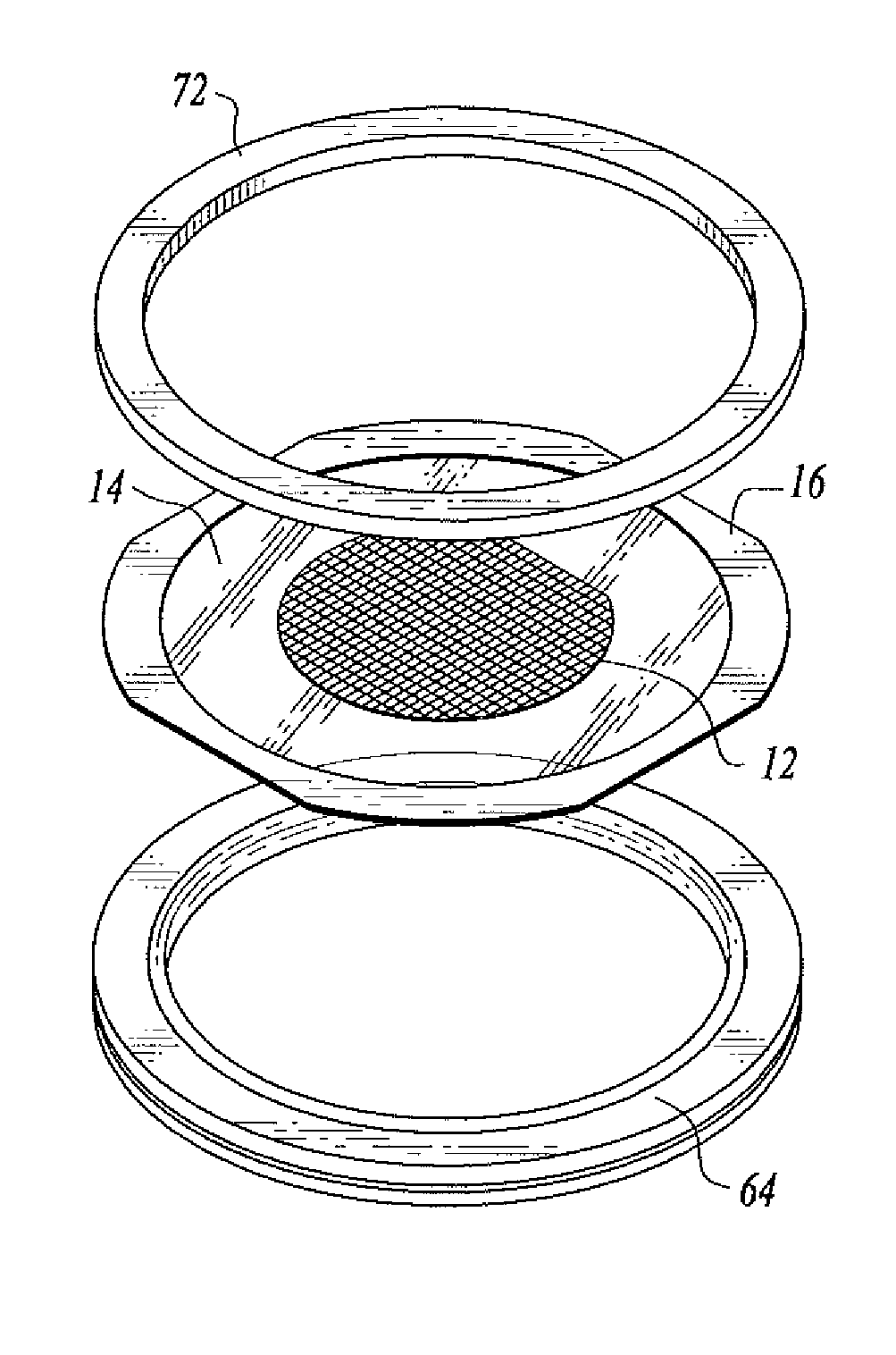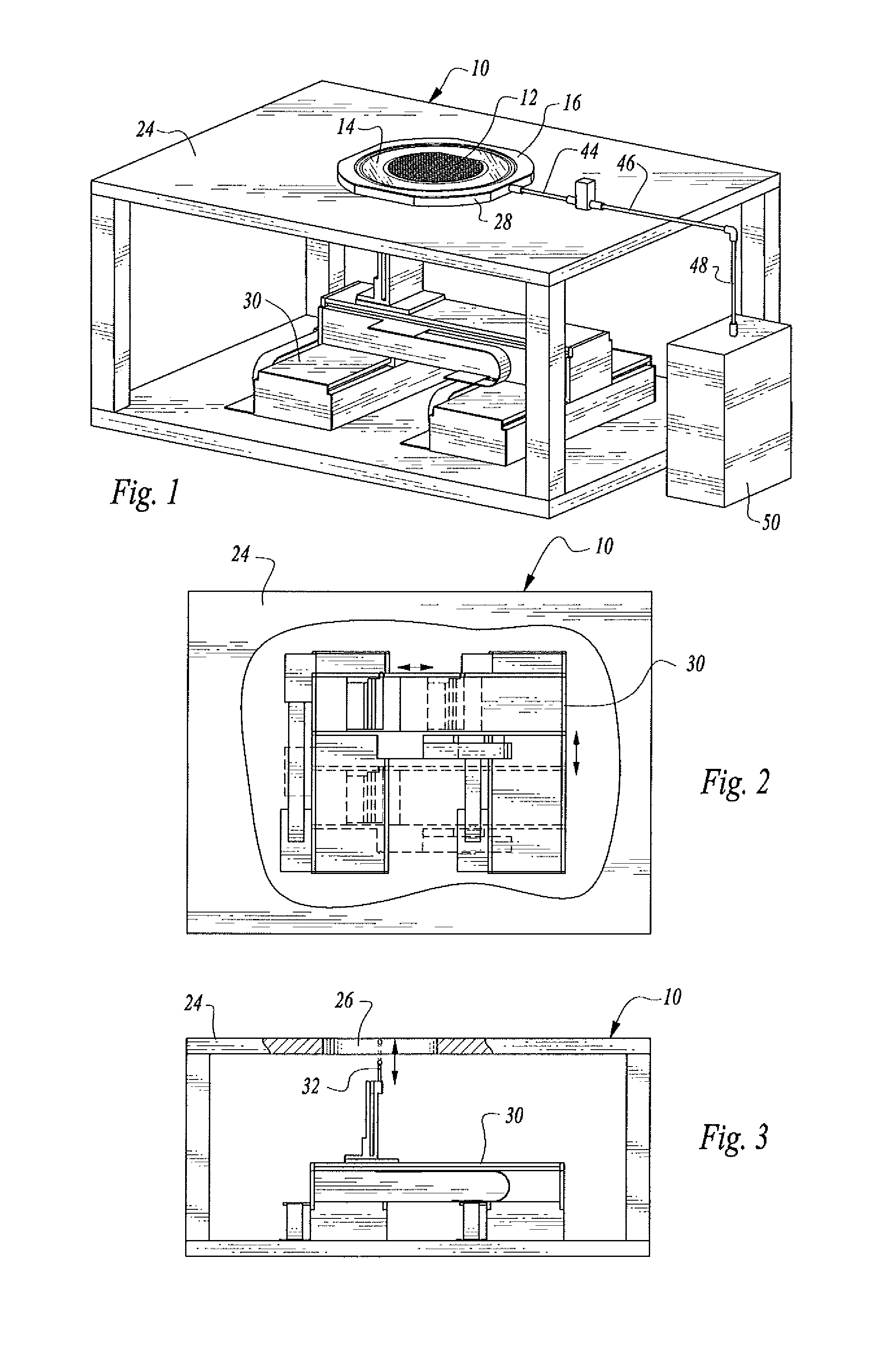System for separating devices from a semiconductor wafer
a technology of semiconductor wafers and separation systems, applied in semiconductor/solid-state device manufacturing, basic electric elements, electric apparatus, etc., can solve the problems of film stretching and losing tension on the mounting frame, not giving a high yield of separated devices, and back metal film breaking
- Summary
- Abstract
- Description
- Claims
- Application Information
AI Technical Summary
Benefits of technology
Problems solved by technology
Method used
Image
Examples
first embodiment
[0036]Referring now to FIGS. 1-12, apparatus utilized to carry out the teachings of the present invention is illustrated and designated by reference numeral 10. The apparatus is for separating semiconductor devices from a semiconductor wafer including back metal on the back side thereof positioned on a plastic film. Such a wafer is designated by reference numeral 12. FIGS. 1, 4, 5 and 8-12 show a plastic film 14 on which the back side of the semiconductor wafer is positioned. As is conventional, a support frame 16 (see FIGS. 4, 5, 8 and 9) supports a peripheral portion of the plastic film surrounding the wafer, as is conventional practice.
[0037]Back metal 18 of the wafer is positioned on the film as is also conventional practice. In the condition shown in the drawings, the wafer is in a condition wherein a rapid, anisotropic etching process has been used to remove all of the semiconductor material in the scribe streets, the etching process having been continued until the back metal ...
second embodiment
[0045]FIGS. 13-18 illustrate apparatus utilized to carry out the steps of the method of this invention wherein the stretch and tension of the plastic film is variable and controlled as a function of a control parameter.
embodiment 10
[0046]Apparatus 60 includes a support table 62 defining an opening (not shown) therein, which may be the same shape as opening 26 of the first apparatus embodiment 10. Below the support table 62 and the opening is a three-axis motion system 30 for moving a stylus (not shown) the same or similar to that incorporated in apparatus 10. The three-axis motion system and stylus operate in the manner of the first apparatus embodiment.
PUM
 Login to View More
Login to View More Abstract
Description
Claims
Application Information
 Login to View More
Login to View More - R&D
- Intellectual Property
- Life Sciences
- Materials
- Tech Scout
- Unparalleled Data Quality
- Higher Quality Content
- 60% Fewer Hallucinations
Browse by: Latest US Patents, China's latest patents, Technical Efficacy Thesaurus, Application Domain, Technology Topic, Popular Technical Reports.
© 2025 PatSnap. All rights reserved.Legal|Privacy policy|Modern Slavery Act Transparency Statement|Sitemap|About US| Contact US: help@patsnap.com



